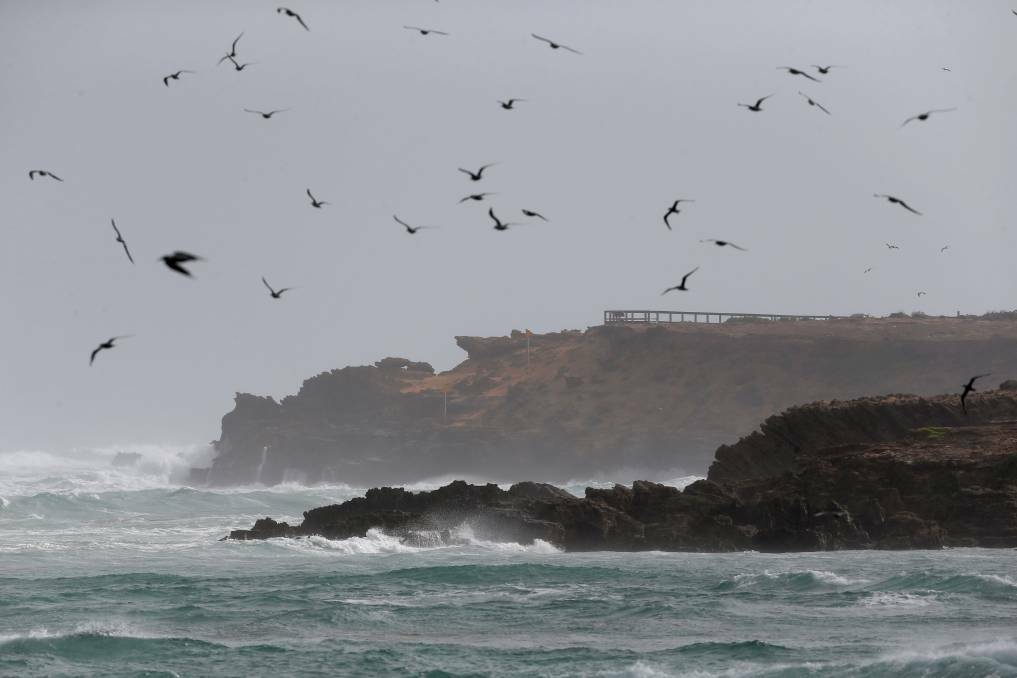Weather Warning: Damaging Winds With Fast-Moving Storms

Table of Contents
Understanding the Threat of Damaging Winds and Fast-Moving Storms
Fast-moving storms develop rapidly, often with little warning, leading to sudden and intense gusts of damaging winds. These storms are characterized by their speed and the concentrated power they unleash. Understanding the meteorological mechanisms behind these events and the different wind speed categories is crucial for effective preparedness.
-
Meteorological Phenomena: Fast-moving storms are often associated with strong pressure gradients, leading to high wind speeds. These can be associated with various weather systems, including squall lines, derechos, and even the leading edge of hurricanes.
-
Wind Speed Categories and Dangers: Wind speeds are categorized to indicate the severity of the threat:
- Gale-force winds (39-46 mph): Can uproot smaller trees, cause power outages, and make travel dangerous.
- Storm-force winds (47-73 mph): Significant damage to trees and structures; widespread power outages are highly likely.
- Hurricane-force winds (74 mph and above): Catastrophic damage to buildings, widespread devastation, and extreme danger to life.
-
Types of Damage Caused by Damaging Winds: The destructive potential of damaging winds with fast-moving storms is immense:
- Fallen trees and power lines: These pose significant hazards, causing injuries and blocking roads.
- Structural damage to buildings: High winds can damage roofs, windows, and walls, leading to structural collapse.
- Flying debris injuries: Loose objects like signs, debris, and even parts of buildings can become deadly projectiles.
- Transportation disruptions: High winds can make driving extremely hazardous, leading to accidents and road closures.
Preparing for Damaging Winds and Fast-Moving Storms: A Pre-Storm Checklist
Early preparation is paramount when facing damaging winds and fast-moving storms. Proactive measures significantly reduce the risk of injury and property damage. The following checklist will help you get ready:
- Develop an emergency plan: This should include evacuation routes, meeting points, and contact information for family members.
- Secure loose outdoor objects: Bring in anything that could become airborne – patio furniture, trash cans, garden ornaments, etc.
- Trim or remove trees near your house: Overhanging branches can easily break and cause damage during high winds.
- Bring outdoor items inside: Store anything that could be damaged by wind or rain.
- Charge all electronic devices: Ensure phones, laptops, and other devices are fully charged in case of power outages.
- Fill your car's gas tank: Gas stations may be inaccessible during or after the storm.
- Gather emergency supplies: Stock up on water, non-perishable food, a first-aid kit, medications, and blankets.
- Stay informed about weather updates: Monitor weather forecasts and warnings closely through reliable sources.
Safety During Damaging Winds and Fast-Moving Storms: Staying Safe Inside
During the peak of a storm with damaging winds, staying indoors is crucial. Find the safest place in your home:
- Interior rooms: Choose a room on the lowest level, away from windows and exterior walls. A central interior room, like a closet or hallway, is ideal.
- Avoid windows: Stay away from windows to avoid injury from broken glass.
- Power outages: If the power goes out, use flashlights instead of candles to prevent fire hazards.
- Mobile homes: Mobile homes are particularly vulnerable. Consider seeking shelter elsewhere if possible, following evacuation orders.
Safety During Damaging Winds and Fast-Moving Storms: Post-Storm Actions
Even after the storm passes, dangers persist. Avoid rushing outside immediately.
- Check for injuries: Provide first aid if necessary and seek medical attention for serious injuries.
- Assess structural damage: Check your home and property for damage before entering.
- Report downed power lines: Contact your local utility company and emergency services immediately.
- Be aware of secondary hazards: Flooding, landslides, and other hazards might occur after the storm.
- Avoid downed power lines: Downed power lines are extremely dangerous and should never be approached.
- Be cautious of damaged structures: Damaged buildings might collapse further, so exercise caution.
Staying Safe During Damaging Winds and Fast-Moving Storms
Damaging winds and fast-moving storms pose significant threats, capable of causing widespread destruction and injury. Preparation, including developing a family emergency plan and securing your property, is vital. Following safety guidelines during and after the storm is crucial to minimizing risks. Heed all weather warnings and stay informed through reliable sources. Create a family emergency plan and regularly check weather forecasts to prepare for potential damaging winds, high winds, severe storms, and other severe weather events. Prioritizing storm preparedness is an investment in your safety and security.

Featured Posts
-
 The Missing Girl Hoax From Reddit Viral Sensation To Sydney Sweeney Film
May 21, 2025
The Missing Girl Hoax From Reddit Viral Sensation To Sydney Sweeney Film
May 21, 2025 -
 Wwe News Mitb Qualifiers Rhea Ripley And Roxanne Perez
May 21, 2025
Wwe News Mitb Qualifiers Rhea Ripley And Roxanne Perez
May 21, 2025 -
 Abn Amro Analyse Van De Stijgende Occasionverkoop
May 21, 2025
Abn Amro Analyse Van De Stijgende Occasionverkoop
May 21, 2025 -
 Celebrating The Premier League 2024 25 Champions In Pictures
May 21, 2025
Celebrating The Premier League 2024 25 Champions In Pictures
May 21, 2025 -
 Jalkapallo Kaellman Ja Hoskonen Jaettaevaet Puolalaisseuransa
May 21, 2025
Jalkapallo Kaellman Ja Hoskonen Jaettaevaet Puolalaisseuransa
May 21, 2025
